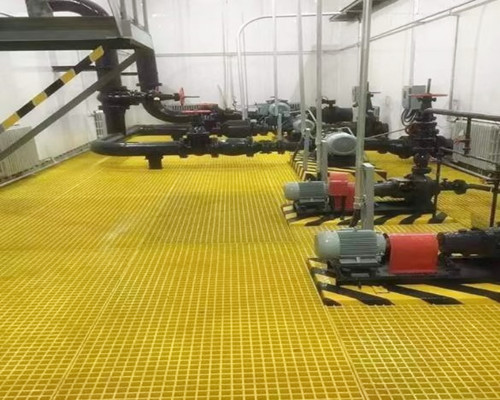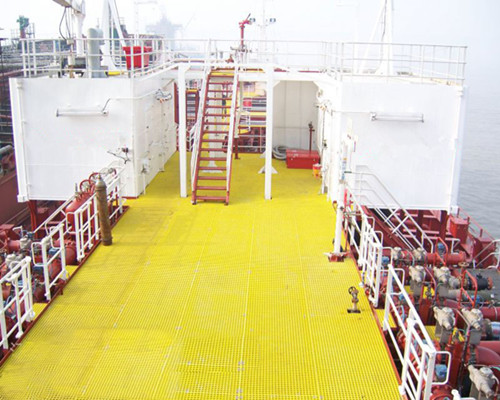The frp grating is made of fiberglass and resin. Fiberglass gives the finished product strength, while the resin makes it resistant to corrosive substances.
What is the difference between molded and pultruded FRP grating?
The molded FRP grating is a grating composed of horizontal and vertical layers of liquid resin and continuous fiberglass roving. As the name suggests, it is made in a large metal mold.
The multi-directional strength of the molded FRP grating means that cutouts that leave room for ducts or navigate in complex floor layouts do not require additional reinforcement. Another advantage of molded FRP is that it has a standard size, which can be ordered in bulk and stored until needed.
The pultruded FRP grating adopts different manufacturing processes. It combines resin and glass fiber through a series of steps into a new composite material.
It does not use molds, so it has greater flexibility in creating different shapes and sizes. And often reduce waste. The pultruded FRP grating has a higher glass-to-resin ratio, which increases its strength and span capability.
Where is the fiberglass grating used?
FRP gratings usually exist in hazardous or harsh environments where it may be affected by elements or come into contact with hazardous and corrosive chemicals. The following are some examples of situations where FRP gratings are used:
- On ships and offshore installations: The rugged and durable characteristics of FRP gratings make them ideal for ships and oil rigs or other offshore installations. It can be exposed to wind, rain and extreme temperatures, and can be immersed in water. It is also very light and relatively easy to transport.
- Use of flammable materials: FRP grating does not emit any sparks, so it is generally regarded as a safer alternative to steel or other flammable materials surrounding the metal. For example, dropping a metal object on it will not produce sparks and may cause the surrounding atmosphere to be ignited.
- In electrical hazardous environments: FRP gratings are usually used in electrical hazardous environments because it does not conduct electricity. Therefore, in the event of an accident involving electricity, it can reduce the risk of electric shock or other injuries.
- In chemical plants: FRP gratings are non-corrosive. This makes it an ideal material for sidewalks, platforms and other surfaces in chemical plants where there is a risk of corrosive material leakage or spillage.
- On complex construction sites: easy to transport, store and cut FRP gratings make it a flexible and cost-effective solution for on-site work. Construction companies can use standard cutting tools to adapt FRP gratings to complex and fluid site layouts.
- grating in factory
- FRP decking in ocean






























